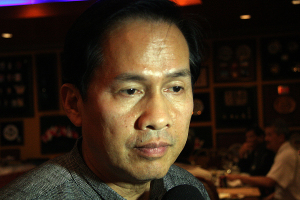The New Convergence of Theology and Science
NAS Declares, "Religion and Science are Separate and Mutually Exclusive Realms of Human Thought"...
"The ancient covenant is in pieces: Man knows at last that he is alone in the universe's unfeeling immensity, out of which he emerged only by chance." So pronounced the Nobel Prize-winning French biologist Jacques Monod in his 1970 treatise Chance and Necessity, which maintained that God had been utterly refuted by science. The divine is fiction, faith is hokum, existence is a matter of heartless probability — and this wasn't just speculation, Monod maintained, but proven. The essay, which had tremendous influence on the intellectual world, seemed to conclude a millennia-old debate. Theology was in retreat, unable to explain away Darwin's observations; intellectual approval was flowing to thinkers such as the Nobel-winning physicist Steven Weinberg, who in 1977 pronounced, "The more the universe seems comprehensible, the more it also seems pointless." In 1981, the National Academy of Sciences declared, "Religion and science are separate and mutually exclusive realms of human thought." Case closed.
And now reopened. In recent years, Allan Sandage, one of the world's leading astronomers, has declared that the big bang can be understood only as a "miracle." Charles Townes, a Nobel-winning physicist and co-inventor of the laser, has said that discoveries of physics "seem to reflect intelligence at work in natural law." Biologist Christian de Duve, also a Nobel winner, points out that science argues neither for nor against the existence of a deity: "There is no sense in which atheism is enforced or established by science." And biologist Francis Collins, director of the National Human Genome Research Institute, insists, "a lot of scientists really don't know what they are missing by not exploring their spiritual feelings."
Ever so gingerly, science has been backing away from its case-closed attitude toward the transcendent unknown. Conferences that bring together theologians and physicists are hot, recently taking place at Harvard, the Smithsonian, and other big-deal institutions. The American Association for the Advancement of Science now sponsors a "Dialogue on Science, Ethics, and Religion." Science luminaries who in the '70s shrugged at faith as gobbledygook — including E. O. Wilson and the late Stephen Jay Gould and Carl Sagan — have endorsed some form of reconciliation between science and religion.
Why the renewed scientific interest in spiritual thinking? One reason is the cyclic nature of intellectual fashions. In philosophy, metaphysics is making a comeback after decades ruled by positivism and analytical theory of language. These restrained, empirically based ideas have run their course; now the pendulum is swinging toward the grand vision of metaphysics — someday, surely, to swing away again. Similarly in science, the pure materialistic view that reigned through the 20th century, holding that everything has a natural explanation, couldn't keep other viewpoints at bay forever. The age-old notion that there is more to existence than meets the eye suddenly looks like fresh thinking again.
Meanwhile, decades of inconclusive inquiry have left the science-has-all-the-answers script in tatters. As recently as the '70s, intellectuals assumed that hard science was on track to resolve the two Really Big Questions: why life exists and how the universe began. What's more, both Really Big Answers were assumed to involve strictly deterministic forces. But things haven't worked out that way. Instead, the more scientists have learned, the more mysterious the Really Big Questions have become.
Perhaps someday researchers will find wholly natural explanations for life and the cosmos. For the moment, though, discoveries about these two subjects are inspiring awe and wonder, and many scientists are reaching out to spiritual thinkers to help them comprehend what they're learning. And as the era of biotechnology dawns, scientists realize they're stepping into territory best navigated with the aid of philosophers and theologians. We are entering the greatest era of science-religion fusion since the Enlightenment last attempted to reconcile the two, three centuries ago.
Look up into the night sky and scan for the edge of the cosmos. You won't find it — nobody has yet. Instruments such as the Hubble Space Telescope's deep-field scanner have detected at least 50 billion galaxies, and every time the equipment is improved, more galaxies farther away come into focus. Space may be infinite — not merely vast, but infinite — encompassing an infinite number of galaxies with an infinite number of stars.
All this stuff — enough to form 50 billion galaxies, maybe fantastically more — is thought to have emerged roughly 14 billion years ago in less than a second, from a point with no physical dimensions. Set aside the many competing explanations of the big bang; something made an entire cosmos out of nothing. It is this realization — that something transcendent started it all — which has hard-science types such as Sandage using terms like "miracle."
Initially, scientists found the big bang's miraculous implications off-putting. When, in 1927, Catholic abbé and astronomer Georges Lemaître first hypothesized that existence began with the detonation of a "primordial atom" of infinite density, the idea was ridiculed as a transparent ploy to place Genesis on technical grounding. But Lemaître enclosed a testable prediction — that if there had been a bang, the galaxies would be rushing away from one another. This idea, too, was ridiculed, until Edwin Hubble stunned the scientific world by presenting evidence of cosmic expansion. From Hubble's 1929 discovery on, science has taken big bang thinking seriously.
In 1965, another sort of big bang echo — the cosmic background radiation — was discovered. Soon, it was assumed, cosmologists would be able to say, "Here's how everything happened, steps one, two, and three." Today cosmologists do think they know a fair amount about steps two and three — what the incipient cosmos was like in the instant after the genesis, how matter and energy later separated and formed the first galaxies. But as for step one, no dice. Nobody knows beyond foggy conjecture what caused the big bang, what (if anything) was present before that event, or how there could have been a prior condition in which nothing existed.
Explanations of how the mass of an entire universe could pop out of a void are especially unsatisfying. Experiments announced in July this year by the Brookhaven National Laboratory in New York measured properties of subatomic particles known as muons, finding that they behave as though influenced by other particles that seem to have materialized from nothingness. But no object larger than the tiniest subatomic particle has been observed to do this — and these "virtual" particles are volatile entities that exist for less than a second, while the big bang made a universe that is superbly stable, perhaps even permanent.
By Gregg Easterbrook




























